Drosera Filaformis “Florida Giant”
$20.00
No one knows the exact origins of Florida Giant is unknown. Some say it’s a natural hybrid or a variety of Drosera filiformis. But we suspect to be a hybrid of D. filiformis and D. tracyi that was bred by a grower in California. At least that’s the working hypothesis for now. Why do we suspect that? The flowers are sterile. We’ve never gotten seeds from it, and the plant seemed to have been first been for sale in California.
A fully grown Florida Giant is a truly impressive plant. It produces slender dewy green leaves that towers over the typical form of dewthread. By the end of the season, many leaves are dotted with carcasses. In winter, the leaves will die back, and the plant will form a resting bud sitting at soil level. Growth will resume in mid-spring.
Type of Plant: Outdoor perennial for container growing.
Leaves: Up to 16 inches at maturity.
Sunlight: Partial to full sun during the growing season.
Water: Low-mineral water (50 ppm or less).
Soil: Equal parts peat moss and perlite only.
Winter: Dormant. Minimal protection in USDA zones 7-9. Mulch in colder regions.
PLANT YOU RECEIVE
• Acclimated for outdoor growing.
• Shipped in a 3-inch pot. Care instructions are included.
- Reviews (0)
Be the first to review “Drosera Filaformis “Florida Giant””
You must be logged in to post a review.

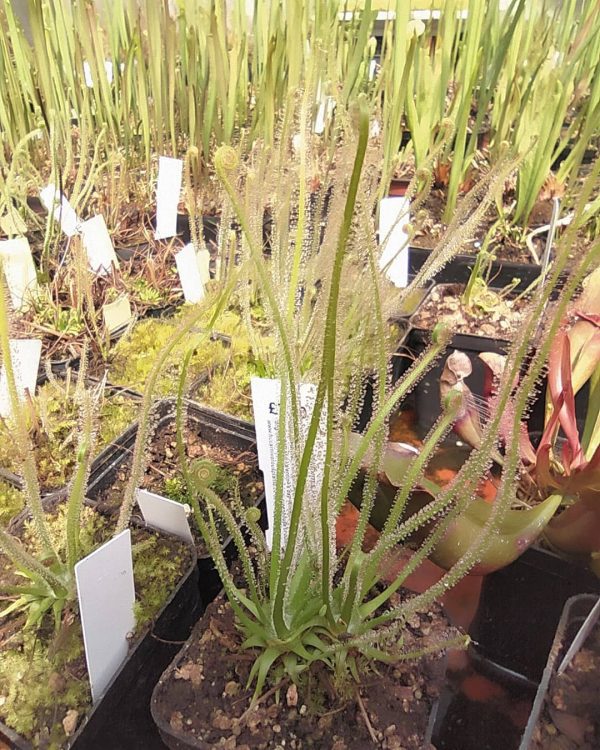
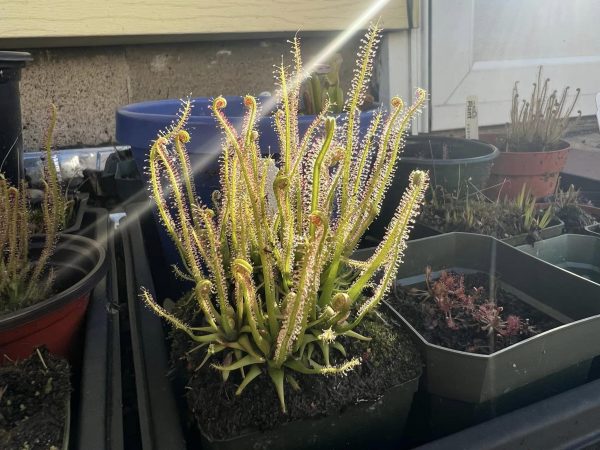
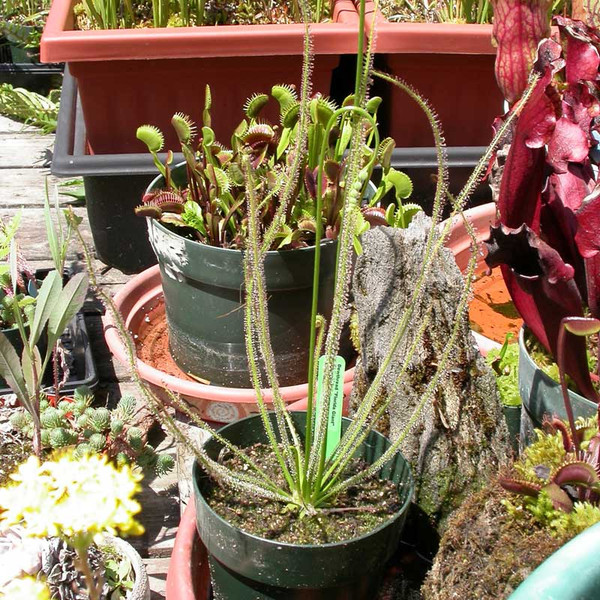
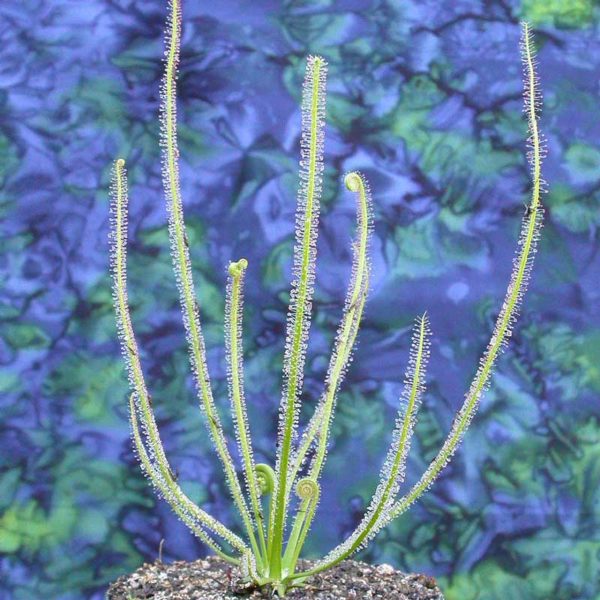
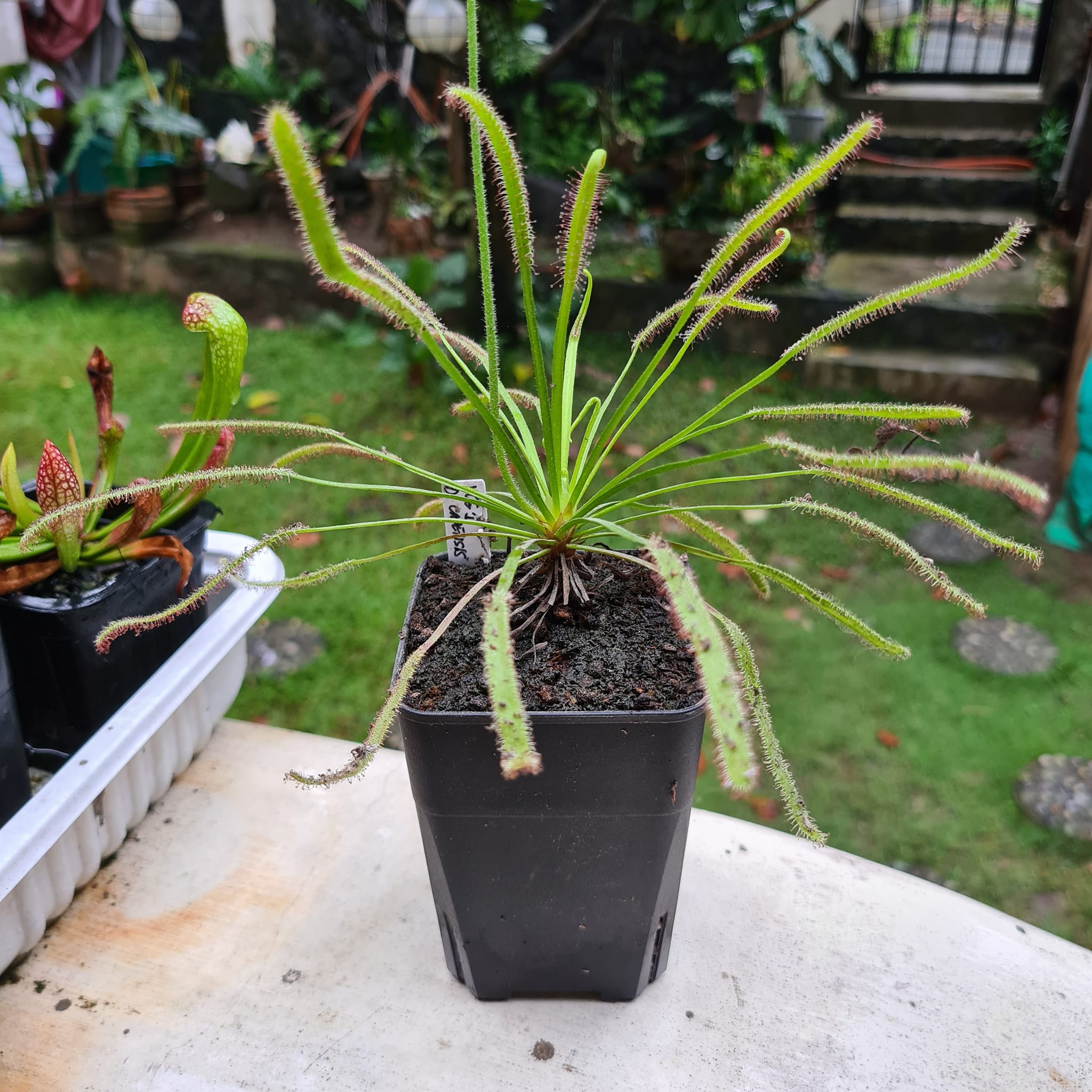

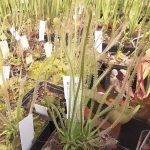
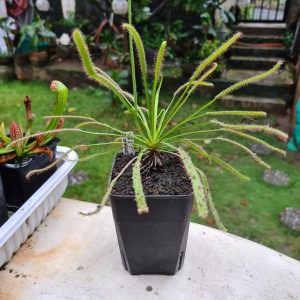
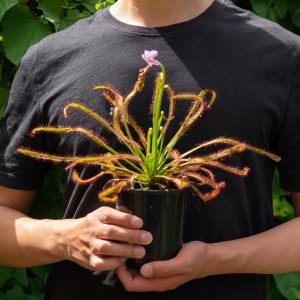
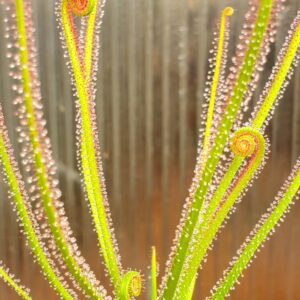

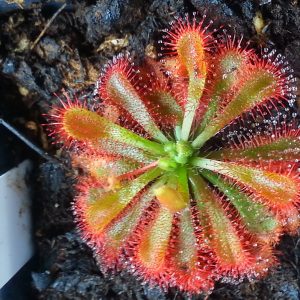
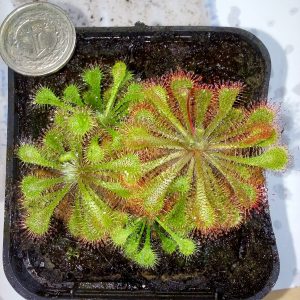


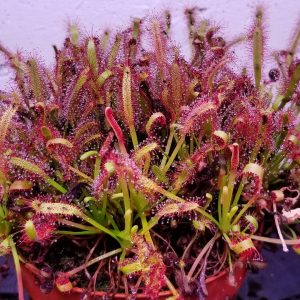
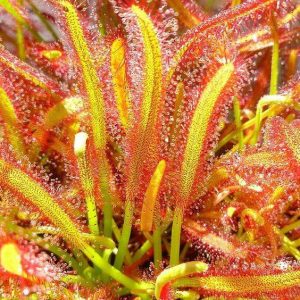
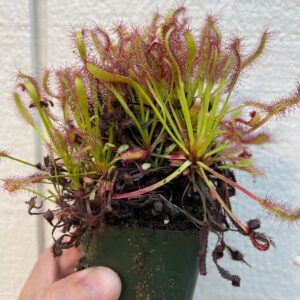
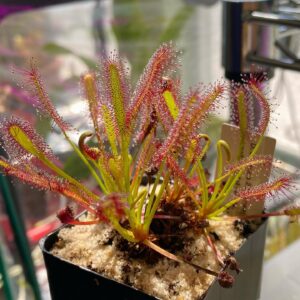
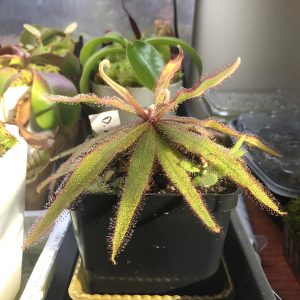
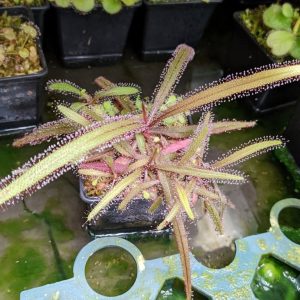


Reviews
There are no reviews yet.